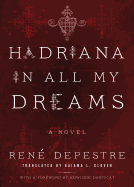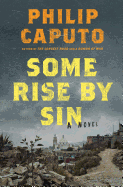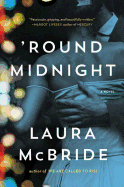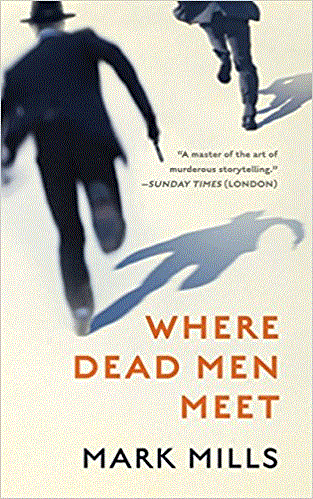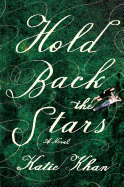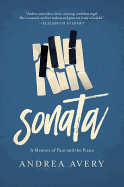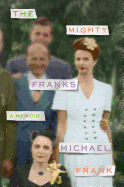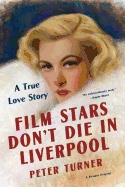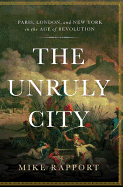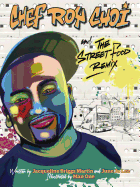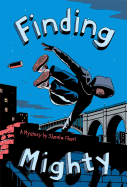Week of Friday, June 2, 2017
A former university librarian, author Sara Shoemaker makes her debut with the novel Mr. Rochester (just out from Grand Central Publishing), an intimate look at the life of one of literature's most moody men. Below Shoemaker describes the inciting event that led her down the dark and brooding path.
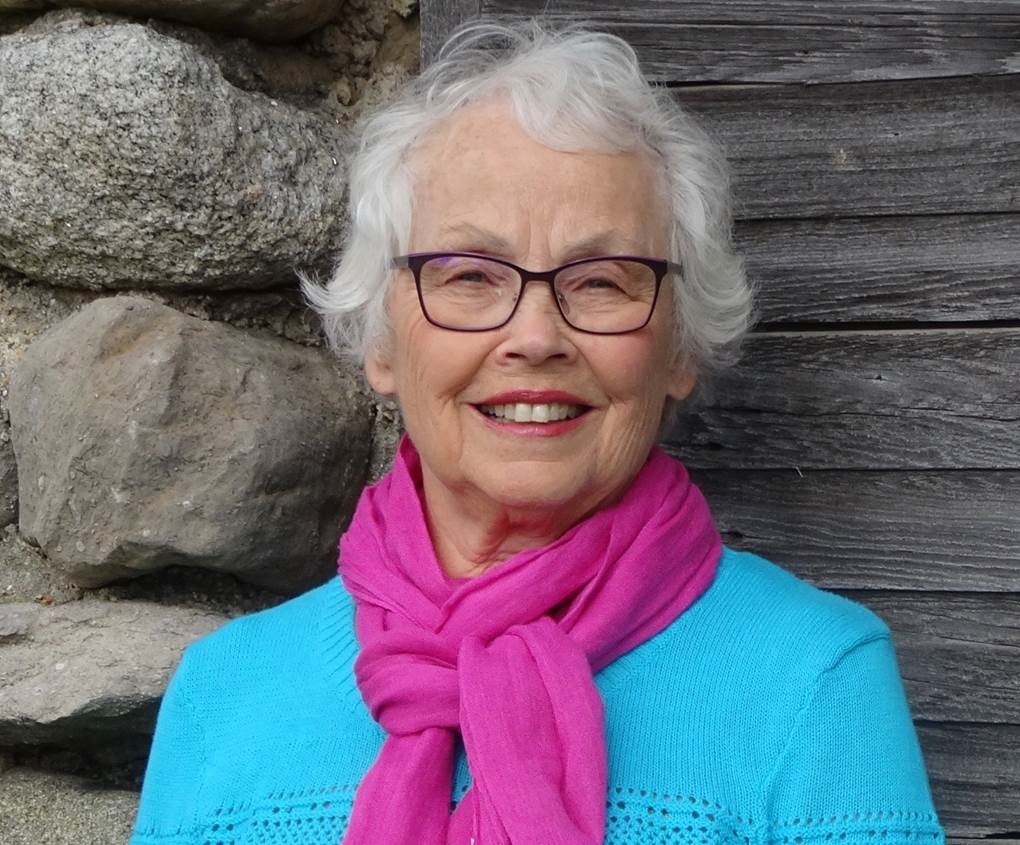 |
|
| photo: Kent Shoemaker | |
Several years ago, my book group discussed Jane Eyre, and, not surprisingly, the talk drifted to Mr. Rochester, this strange and moody man who is sometimes playful and other times angry, who seems to care for Jane but romances Miss Ingram, and who, it turns out, keeps his insane wife in an upstairs apartment. Who is he, really, and why is Jane attracted to him? Some of the group said, "Sometimes people make big mistakes in love, falling for the wrong person." Others said, "Not Jane; she's too intelligent, too morally grounded, too independent." As the discussion continued in that vein, I finally thought to myself, and then said out loud, "Someone ought to write a book about Mr. Rochester, so that we can understand where he's coming from--what's behind the things he says and does." Coming home that day, I decided to write that book, to understand for myself what is the basis for Rochester's actions. Easy enough, I thought at the beginning, all I have to do is explain all the years before he meets Jane. Actually, it turned out not so easy after all, for I had not really counted on Rochester's complexities, but I was determined to get to know him and care about him in all his moods. As I wrote, I tried to keep in mind a quote from Charlotte Bronte herself: "without esteem, true love cannot exist." Jane saw something in him, I told myself, and I tried to help the reader, and myself, to see that "something," too.
Coming home that day, I decided to write that book, to understand for myself what is the basis for Rochester's actions. Easy enough, I thought at the beginning, all I have to do is explain all the years before he meets Jane. Actually, it turned out not so easy after all, for I had not really counted on Rochester's complexities, but I was determined to get to know him and care about him in all his moods. As I wrote, I tried to keep in mind a quote from Charlotte Bronte herself: "without esteem, true love cannot exist." Jane saw something in him, I told myself, and I tried to help the reader, and myself, to see that "something," too.
It was much later that I came across a statement from Toni Morrison that perfectly fits what I have done: "If there is a book you really want to read but it hasn't been written yet, then you must write it."
Woman No. 17
by Edan Lepucki
Woman No. 17, Edan Lepucki's follow-up to her breakout post-apocalyptic novel California, is as mysterious and unpredictable as its troubled protagonists, the unusually named Lady and S.
Lady Daniels has decided to separate from her husband. She needs a live-in nanny to take care of her young son, Devin, while she writes a parenting memoir about raising her teenage son, Seth, who is nonverbal. S--shortened from Esther--immediately impresses Lady with her self-confidence, and before long S, who's also a struggling artist, is living in a small building by the pool that she calls "the Cottage."
Woman No. 17 liberally borrows the tropes of noir thrillers while remaining something more difficult to define. Instead of violence and criminal intrigue, Lepucki is concerned with psychological drama and exploring questions of motherhood and art. Her characters are never what they appear to be, and much of the novel's suspense comes from the way it burrows further into each character's psyche and past first impressions, and into their complicated inner lives.
The revelations that come feel less like twists than new insights into each person's behavior. For example, it's revealed early on that the title is a reference to a famous photograph of Lady. The photographer is one of S's idols, but the portrait itself is almost too intimate: "Her stomach sagged over the waistband. The stocking seam was like a scar bisecting the lower half of her torso." Lady hates the photo, but is it because it's exploitative or is it because it says something true about her? As is the case with much of Woman No. 17, it depends on the interpretation. --Hank Stephenson, bookseller, Flyleaf Books, Chapel Hill, N.C.
Discover: Woman No. 17 is a brilliant follow-up to California and a twisty, emotionally complicated noir about art, motherhood and mysteries without any easy answers.
Hadriana in All My Dreams
by René Depestre, transl. by Kaiama L. Glover
One of Haiti's most celebrated authors, René Depestre first published Hadriana in All My Dreams in French in 1988. Now, for the first time, this slim and beguiling novel about the mysterious death and possible zombification of a young woman on her wedding day has been translated into English. Hadriana, the white daughter of a wealthy French couple, unknowingly drinks poison the morning she's to be married to a black Haitian man. When she collapses at the altar, she's presumed dead. A carnival is held during her wake, much to the chagrin of her Catholic priest, and she is soon buried. But when locals examine her grave a few days later, they find it empty.
What follows has dreamlike logic: the narrators--Hadriana and Patrick, her eventual lover--combine fancy and truth to explain how and why the young woman disappeared. Woven throughout are Haitian myths--including that of a sex-starved butterfly--and testimonies from friends who exaggerate their memories of the death to explain the violent weather and economic downturn their village experienced. Translated beautifully by Kaiama L. Glover, Depestre's writing sings with an epic sensibility. Consider the description of Hadriana's wake: the "village square, which, in the midst of this general masquerade, took itself for the cosmic stage of the universe."
With its lyrical commentary on the origins of myth, this mesmeric and frequently erotic work transcends its focus on a young woman to address the complexities of race, class and religion. --Amy Brady, freelance writer and editor
Discover: This captivating novel draws from the history of Haitian Vodou to create a provocative story steeped in magical realism.
Some Rise by Sin
by Philip Caputo
Channeling the likes of Thornton Wilder and Graham Greene, Philip Caputo (Acts of Faith) frequently writes about Americans working abroad who struggle with the moral consequences of their actions. Some Rise by Sin focuses on Father Tim Riordan, a troubled Franciscan friar assigned to a church in Mexico's remote Sierra Madre mountain town of San Patricio, and Lisette Moreno, the only medical doctor in the area. These two conflicted expatriates try to serve the indigent in a place dominated by poverty, fear, cartel wars and the corrupt army and state police sent to wipe out the narcos.
Riordan is a Harley-riding priest with a history of failing in his vows of celibacy. He also harbors a troubling doubt regarding a God who fills his church with funeral masses for senselessly murdered young men, as well as a debilitating acrophobia that strikes every time he rides the narrow mountain roads. Lisette works with limited resources to treat locals despite their history of Catholic admonishments and Amerindian folk medicine. She's also keeping her affair with artist Pamela Childress under wraps. As the cartel wars accelerate, Riordan and Moreno compromise their respective professional vows to try to stop the bloodshed. As Riordan reflects, "Pity without action is sentimentality." But action brings consequences, both personal and political, and in Some Rise by Sin, Caputo puts his discerning finger on the pulse of the struggle to reconcile altruism with pragmatism. --Bruce Jacobs, founding partner, Watermark Books & Cafe, Wichita, Kan.
Discover: Caputo's thoughtful novel thrusts two U.S. humanitarians into the turbulent violence of Mexico's narco wars in the remote Sierra Madres.
'Round Midnight
by Laura McBride
As a young, headstrong girl in her small New Jersey town, June Stein hungered for a different life. She never expected to end up as the joint owner of a successful Las Vegas casino. But the El Capitan hotel and casino--with its nightclub, the Midnight Room--becomes June's home, her livelihood and, ultimately, her undoing. In her second novel, 'Round Midnight, Laura McBride braids a compelling, heartbreaking narrative of four women--June, Honorata, Engracia and Coral--whose lives are transformed by the El Capitan.
McBride (We Are Called to Rise) depicts the tumultuous growth of Las Vegas from the 1950s to the present day, and draws her protagonists with a deft hand--though June and Coral are more vivid than the others. Placing each character in a different era allows McBride to explore the shifting, complicated racial politics and economic realities of life as a local during the city's evolution from upstart boomtown to flashy desert metropolis. Each woman is ultimately motivated not by money, but by family: the one she leaves, the one she loses and the one she creates for herself. All four women, especially June, must reckon with the consequences of their own choices, and the novel's conclusion, though abrupt, draws their stories together nicely. McBride is skilled at handling multiple narrative threads, but more simply, she knows how to do what Vegas does: lure a passerby in, hook them with a good story and leave them wanting more. --Katie Noah Gibson, blogger at Cakes, Tea and Dreams
Discover: Laura McBride's second novel tells the stories of four women whose lives are transformed by a Las Vegas casino and nightclub.
Mystery & Thriller
Where Dead Men Meet
by Mark Mills
Reading Mark Mills's Where Dead Men Meet is like watching an Alfred Hitchcock movie, one with an expertly drawn everyman caught up in engrossing intrigue and on the run from dangerous spies and nefarious characters. Accompanied, of course, by a beautiful and possibly deadly dame. The opening is brutal: in 1937 England, a nun is beaten to death.
Cut to Paris, France, where Luke Hamilton works as a junior air intelligence officer at the British Embassy. He receives word of the murder of Sister Agnes, who raised him after he was orphaned as a baby 25 years earlier, until he was adopted. Even more distressing, he receives a note while dining out, stating that an assassin has Luke in his sights; minutes later, the veracity of the note is confirmed. Luckily, someone else in the restaurant is aware of the killer and saves Luke's life. This begins Luke's trek across Europe, taking him to Germany, Switzerland, Italy and Croatia. Along the way he meets Pippi, whom Luke's rescuer assures will be helpful, but Pippi has her own agenda involving salvation and revenge, and becoming entangled in her plans might put Luke in even more danger.
Where Dead Men Meet is an adventurous, cinematic read, which isn't surprising since Mills is a former screenwriter. It's smart entertainment, a suspenseful escapade across Europe with a dash of romance and involving characters who insist you come along for the unforgettable ride. --Elyse Dinh-McCrillis
Discover: An intelligence officer is swept up into international intrigue in this cinematic thriller.
Science Fiction & Fantasy
Hold Back the Stars
by Katie Khan
Katie Khan's first novel, Hold Back the Stars, is high-concept and deeply emotional. Carys and Max are trapped in space, with only 90 minutes of oxygen left. As they spin wildly, trying to find a way back to their spaceship, they ruminate on the tumultuous affair that led them to this point.
The Earth far beneath them is awash in difficulties. The United States and the Middle East are deserted wastelands, victims of nuclear fallout. Europe has created a utopian society where individuals live "on rotation"--moving from location to location every three years, living in multicultural groups, thus assuring that ethnic or religious affiliations don't sidetrack Europia's lofty goals. But its rules forbid any individuals to merge into a couple and bear children until age 35, at which point they should have already made excellent contributions to society. So when Max, a chef, and Carys, a space shuttle pilot, meet in their 20s and fall in love, their romance is doomed.
Told in a series of flashbacks to various points in their relationship, with a rapidly ticking clock in the present, Hold Back the Stars is guaranteed to keep readers up late at night, frantic to know how Carys and Max's story will end. Khan's intriguing world and the surprise ending do not disappoint, making the novel an irresistible treat. Romance readers, science fiction fans and those who enjoy suspense are sure to free-fall in love. --Jessica Howard, blogger at Quirky Bookworm
Discover: In this suspenseful novel, two lovers are trapped in space with only 90 minutes of oxygen left.
Biography & Memoir
Sonata: A Memoir of Pain and the Piano
by Andrea Avery
Andrea Avery was 12 and a promising classical pianist when she was diagnosed with rheumatoid arthritis. This often-misunderstood autoimmune disorder is characterized by inflamed and painful joints, muscles, tendons and bones. In the United States, 1.5 million adults and nearly 300,000 children are affected. "When you are a chronically ill child preparing for a life of disease, you get old before you grow up.... I got arthritis before I got my period."
In Sonata, Avery reflects candidly on her illness's physical and emotional aspects, deeply mourning its premature thwarting of her ambitions as a classical musician. "There is a particular pain in never having been given the opportunity to expand, honor, or exhaust whatever allowance of natural musical talent I had." She shares how the illness affected her already dysfunctional family, and her worries that love would be elusive because of her body's limitations. "Arthritis makes people think of their grandparents, which usually makes them uninterested in sex."
Encouraged by teachers, Avery still focuses on music. She draws meaning and motivation from Franz Schubert's Sonata in B-flat D960, a piece that prompted her return to the piano--long after intensive surgery--and influenced her professional direction. Comparing the 19th-century composer's brief life and her own, Avery bridges the sometimes infinitesimal difference between pain and joy. "There's so little difference--two tiny vowels--between melody and malady."
Subdued and introspective, Sonata examines the "cruel synchrony to be gifted with music and arthritis nearly simultaneously"--the aftermath of hopes and dreams erased before fully realizing one's potential and the connective force of music in our lives. --Melissa Firman, writer, editor and blogger at melissafirman.com
Discover: A prodigious classical pianist is diagnosed with rheumatoid arthritis at age 12.
The Mighty Franks
by Michael Frank
Michael Frank comes from an especially close-knit family: his mother's brother married his father's sister. He is devoted to his doubly related Aunt Hankie and Uncle Irving. The elder couple is childless, and so they "share" the younger couple's three sons, of whom Mike is the eldest. The two households are neighbors in Laurel Canyon, in the Hollywood Hills. Both grandmothers live together at the foot of the canyon. It is all very cozy: Aunt Hankie calls them "the larky sevensome," or "the Mighty Franks."
And Mike is the luckiest, larkiest one of all, because he is Aunt Hank's pet. They spend their free time together. She takes him antiquing, and sets out to teach him everything she knows. Hank (a nickname for Harriet) and Irving are successful Hollywood screenwriters, and they have the finest taste in architecture, art, literature, movies, music (nothing after Brahms) and manners. But when Mike begins to awaken to a world larger than Aunt Hank, and forms his own opinions and tastes, she sees this as rebellion, ingratitude or worse. As Mike grows up, Hank seems to break down and the Mighty Franks begin to fissure.
The Mighty Franks is an immediate, gut-wrenching account of events that are often painful for young Mike. While not an easy story to take in, Frank's ruminations offer some necessary distance. His tone is serious and his prose occasionally verbose, but the saga of this flawed family is deeply involving. Any hint of sensationalism is more than balanced by the psychological insights Frank eventually achieves. --Julia Jenkins, librarian and blogger at pagesofjulia
Discover: This memoir of family wounds and favoritism charts dark territory as the author searches for understanding.
Film Stars Don't Die in Liverpool
by Peter Turner
Budding actor Peter Turner met Oscar-winning actress Gloria Grahame in 1978. Having moved to England to star in a play, she was 55 and two decades beyond her Hollywood heyday (starring in The Big Heat, Oklahoma! and The Bad and the Beautiful). Grahame's friendship with Turner became romantic despite their 30-year age difference, and the two traveled to California and New York.
In 1980, Grahame was diagnosed with breast cancer, which she refused to treat. Instead of telling Turner, she broke up with him. Film Stars Don't Die in Liverpool, Turner's slim, sad and heartfelt memoir, begins in 1981 when Grahame reenters his life after a year apart. She now has stomach cancer and a week to live. Turner, still living at home, takes her into his family's overstuffed house and comes to grips with her impending death.
The memoir covers both the chaos in the Turner home caring for the dying actress (still refusing medical care) and flashbacks to Turner and Grahame's relationship. Turner is remarkably candid about his callow 29-year-old self (he leaves the dying woman in the care of his mother and siblings one night while he meets friends for drinks), but then surprisingly reticent on Grahame's earlier life. She divorced filmmaker Nicholas Ray and later married his 23-year-old son (her ex-stepson); Turner blithely notes, "It was a family of complicated relationships." Originally published in 1986, this reissue contains a new final chapter, in which Turner offers perspective three decades later on his touching tribute to the brave but complicated woman he loved. --Kevin Howell, independent reviewer and marketing consultant
Discover: Peter Turner's touching and heartfelt memoir remembers the tragic last days of his former girlfriend, Oscar-winning actress Gloria Grahame.
History
The Unruly City: Paris, London and New York in the Age of Revolution
by Mike Rapport
In The Unruly City, historian Michael Rapport (1848: Year of Revolution) considers how three cities--Paris, London and New York--became sites of social struggle in the period of the American and French Revolutions. He looks not simply at the events that occurred in each city, but how the cities as physical and social entities helped shape those events and were in turn transformed by revolutionary action.
Rapport gazes at moments of revolution, familiar and unfamiliar, through the lens of neighborhoods, buildings, physical icons and demographics. He creates a richly textured picture of 18th-century urban life, and how it varied among the three cities. For instance, he demonstrates how the composition and physical location of a neighborhood like the Faubourg Saint-Antoine in Paris made it part of the revolutionary vanguard. Likewise, he examines the transformation of the Common in New York, Saint George's Field in London and the Palais-Royal in Paris into popular gathering spots for the disaffected from all social classes. Considering institutions of revolt within the context of locale--coffee houses, taverns and, in the case of Paris, repurposed religious buildings--Rapport also explains the impact of meeting place on organization. In doing so, he traces the shift of activist locations from established meeting halls and courts to the spaces frequented by artisans and craftsmen.
In Rapport's hands, the cities become players in the story, not simply backdrops for the turmoil of the Age of Revolutions. --Pamela Toler, blogging at History in the Margins
Discover: A historian examines how the cities of London, New York and Paris helped shape the Age of Revolution.
Children's & Young Adult
Chef Roy Choi and the Street Food Remix
by Jacqueline Briggs Martin and June Jo Lee, illus. by Man One
Born in Korea and raised in Los Angeles, Roy Choi is a professionally trained chef-turned-"street cook" who wants "outsiders, low-riders, kids, teens, shufflers, and skateboarders to have food cooked with care, with love, with sohn-maash," or "the flavors in our fingertips... the love and cooking talent that Korean mothers and grandmothers mix into their handmade foods." After a celebrated career in high-end restaurants, Choi, overwhelmed by the pressure, lost his job. When a friend made the crazy suggestion that they start a Korean taco truck, Choi agreed, wanting to "remix the tastes he loved on the streets that were his home." Their unusual blend of cultural tastes became a street food sensation with "Koreans with Latinos, kids with elders, taggers with geeks"--everyone, in other words. Next, Choi and another chef friend began opening fast-food spots in "hungry neighborhoods" to "feed good food, create worthy jobs, and bring smiles." This venture, too, was a success, putting Choi's worries--"Would people care about soulful fast food?"--to rest. Choi continues to bring his "mad cooking skills" and fresh, local ingredients to the urban landscape, encouraging everyone to eat and cook with love.
Chef Roy Choi, book three in Jacqueline Briggs Martin's Food Heroes series (Alice Waters and the Trip to Delicious; Farmer Will Allen and the Growing Table), is co-authored by food ethnographer June Jo Lee who, like Choi, was born in Seoul, Korea, in 1970 and moved to California as a child. Internationally renowned Mexican-American graffiti artist Man One brings his up-close-and-personal spray-paint, pencil and digital art to this unusual and inspiring picture book biography. --Emilie Coulter, freelance writer and editor
Discover: In this inspiring biography, part of the Food Heroes series, chef Roy Choi leaves behind a fancy restaurant career to introduce the world to Korean tacos served from a food truck.
Finding Mighty
by Sheela Chari
Shortly before Peter Wilson starts sixth grade, his older brother Randall, aka Mighty, a graffiti artist and budding parkour freerunner, mysteriously disappears. Within days, their mother moves the family from Yonkers, N.Y., to a rental house in historic Dobbs Ferry, N.Y. Around the same time, Myla Rajan, another upcoming Dobbs Ferry sixth grader, buys a necklace at a Yonkers street fair with a sacred Sanskrit "om" symbol on one side and the word "keeper" on the other, setting off a chain of events no one could have predicted.
Peter and Myla's stories begin weaving together even before they become next-door neighbors, but their tentative partnership in solving a nearly decade-old mystery involving murder, stolen diamonds and graffiti has a rocky start while they assess whether they can trust one another. Peter is sure Randall's disappearance is connected to the bigger mystery, and he is desperate to bring his brother home and, if at all possible, to stay in one place long enough actually to feel at home.
Sheela Chari (Vanished) builds an elaborate and thrilling mystery incorporating real New York history, geography and engineering marvels, as well as cultural elements such as tagging and the urban sport of freerunning. In alternating first-person chapters, readers learn how Myla and Peter bond over their shared "difference" of being people of color in a predominantly white town--Myla is Indian-American and Peter is black, Indian, and white--and how both struggle to come to terms with their place in their respective families and community. Readers will be kept guessing until the very end... and enjoy every minute of it. --Emilie Coulter, freelance writer and editor
Discover: Two 12-year-olds enter into a dangerous world of gangs, diamond fencing and murder in this complex and dramatic middle grade mystery.
Welcome: A Mo Willems Guide for New Arrivals
by Mo Willems
Though unlikely, it is possible that some new parents are not yet familiar with the brilliant Mo Willems (Knuffle Bunny; I Will Take a Nap; Waiting Is Not Easy; A Big Guy Took My Ball!). Fortunately, Welcome is here to rectify that. But in addition to introducing the world to the beloved Caldecott Honoree, this "Guide for New Arrivals" serves as a hilarious manual for babies. Boldly illustrated pages instruct an infant audience to "PLEASE ENJOY YOUR STAY. Many activities are available for you to enjoy, including, but not limited to: SLEEPING and WAKING/ EATING and BURPING/ POOPING and MORE POOPING." Highlights of life are touched upon ("We are pleased to inform you there will be MUSIC [CATS/STORIES]") as well as pitfalls ("WE REGRET TO INFORM YOU Not everything is as it should be. There is unkindness and fighting and wastefulness and soggy toast. You will not be exempt from any of these things").
Each cardstock spread features silhouetted images in street sign-like frames, often in yield-sign yellow: a toothless smiling baby, two halves of a bagel and a clever tryptic illustrating different kinds of stories: true (a figure in a boat catching a small fish), made up (same figure with a giant fish at the end of the line) and silly (a shark in a boat with a person on the line). With its deadpan humor and wry sweetness, Welcome clearly has those caring for small children in mind, but the bottom-of-the-page refrain, "while we read this book together" speaks to the expectation that there will be a baby or toddler on the lap of the reader.
Baby shower gift, anyone? Better than a case of Pampers! --Emilie Coulter, freelance writer and editor
Discover: In this witty, wonderful baby gift book, Mo Willems presents "new arrivals" with a guide to life that includes both the joy of cats and the poignance of spilled ice cream.



